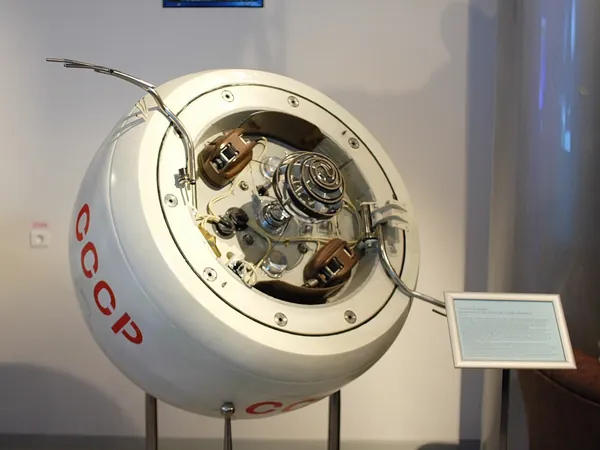
The Chip War: Can the U.S. Compete with Asia's Semiconductor Powerhouses?
2025-04-15
Author: Sophie
The Struggle for Chip Dominance
In a fierce battle for technological supremacy, the U.S. finds itself behind the curve when it comes to semiconductor manufacturing, a critical sector that underpins everything from smartphones to military technology. Gina Raimondo, former U.S. Commerce Secretary, noted that America "dropped the ball" on chip production, allowing countries like China and Taiwan to surge ahead.
Trump's Tariff Strategy: Is It Enough?
Former President Donald Trump’s strategy to revitalize the chip industry hinges on a tariff policy he believes will bring jobs back to America. However, this approach faces significant hurdles, including a lack of skilled labor and subpar production quality at U.S. factories. With advanced chip manufacturing concentrated in Asia, can Trump’s tariffs genuinely level the playing field?
Understanding the Chip Ecosystem
Semiconductors are the backbone of modern technology. Despite their American invention, the majority of cutting-edge chips are now produced in Asia—especially Taiwan, Japan, and South Korea—thanks to their expertly refined manufacturing processes. Let's break down the complex journey of a chip: designed in the U.S., fabricated in Asia, and finally assembled back in China before reaching American shores.
The U.S. Chips and Science Act: A Step Forward?
In response to this gap, the U.S. government passed the Chips and Science Act in 2022, aiming to boost domestic production through substantial grants and subsidies. Major companies like Taiwan Semiconductor Manufacturing Company (TSMC) and Samsung have already secured billions in funding for facilities in the U.S. Nevertheless, challenges persist, from rising costs to construction delays and labor shortages.
China's Ambitions and Economic Ramifications
China is also eyeing the semiconductor game, making considerable investments to catch up with Taiwan. The stakes are high, and as nations reevaluate their supply chains, tariffs may disrupt not just the U.S. economy but also Japan's and others that rely heavily on semiconductor export markets.
The Future of Manufacturing: India's Role
Amidst all this, India is emerging as a potential new hub for chip manufacturing. With a growing talent pool and lower labor costs, it could be better positioned to integrate into the global chip supply chain than the U.S. However, it faces formidable challenges, including land acquisition and water quality necessary for production.
Lobbying Power and Industry Pressures
Despite tariffs, the significant demand from American tech giants like Apple and Microsoft could sway government decisions. Lobbying efforts have already resulted in exemptions for certain electronic tariffs. Trump himself has hinted at negotiating potential deals with major players like TSMC, indicating a flexible approach rather than a strict isolationist stance.
Lessons from Asia: Collaboration Over Isolation
The global semiconductor landscape has taught us a valuable lesson: successful chip production relies on collaboration, not isolation. While Trump’s protective measures are aimed at building American independence in semiconductor manufacturing, they could hinder the very innovation necessary to compete effectively against Asia's advanced chip-making capabilities.
Conclusion: A Long Road Ahead
As the U.S. grapples with its place in the semiconductor race, it becomes increasingly clear that reviving the domestic chip industry will require a concerted effort—not just in policy but in attracting the right talent and fostering international cooperation. Will America be able to reclaim its position in the chip industry, or will it forever remain a follower?









 Brasil (PT)
Brasil (PT)
 Canada (EN)
Canada (EN)
 Chile (ES)
Chile (ES)
 Česko (CS)
Česko (CS)
 대한민국 (KO)
대한민국 (KO)
 España (ES)
España (ES)
 France (FR)
France (FR)
 Hong Kong (EN)
Hong Kong (EN)
 Italia (IT)
Italia (IT)
 日本 (JA)
日本 (JA)
 Magyarország (HU)
Magyarország (HU)
 Norge (NO)
Norge (NO)
 Polska (PL)
Polska (PL)
 Schweiz (DE)
Schweiz (DE)
 Singapore (EN)
Singapore (EN)
 Sverige (SV)
Sverige (SV)
 Suomi (FI)
Suomi (FI)
 Türkiye (TR)
Türkiye (TR)
 الإمارات العربية المتحدة (AR)
الإمارات العربية المتحدة (AR)